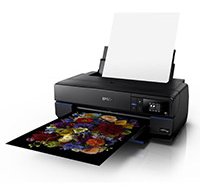Resolution and viewing distance: Understanding dpi and what dpi is right for your printing
posted Friday, January 6, 2017 at 12:00 PM EDT

Understanding print resolution can be a tricky topic. For photographers, new and seasoned alike, there can be a lot of confusion with print resolution and dots per inch (dpi). At what resolution should you print your images? How does your camera’s megapixel count influence how big you can print your work? Commercial photographer Thomas Kuōh (Instagram) prints images at a wide range of sizes for many different uses, from fine art prints to billboards and everything in between. He has made a new video to help us understand printing and dpi.
Suppose you’re shooting with a new Sony A99 II, a camera with a 42-megapixel sensor, if you were to print a full-resolution image at 300 dpi, that would be a print size of roughly 26 x 17 inches. Sure, it’s a large print, but it’s not huge, and it’s certainly not billboard-sized. So how do you make large prints that still look good? You adjust dpi to fit the situation in which the print will be viewed. If you have a huge print, such as a billboard, why would you need to print at 300 dpi? It won’t be viewed up close. In fact, billboards are printed at 15 dpi. Magazines aren’t even printed at 300 dpi, but rather at 150 dpi. As Kuōh points out, you’ve likely never been reading a magazine and noticed that photos looked low resolution.
He states further that fine art prints should be made at 240 dpi. You may have read to print at 300 dpi or even 360 dpi, and over the years I’ve printed at a wide variety of resolutions and yes, there can be times when I have seen a difference…when using a magnifying glass or holding the print right up to my face. It’s important to consider how your images will be viewed in the real world and I can guarantee you that nobody will be viewing your fine art prints through a magnifying glass.
Most of us aren’t printing bus wraps or billboards or shooting with medium format cameras, so you may be wondering about more common situations, such as printing an image you captured with your DSLR or mirrorless camera to hang on the wall. Here is some further reading on printing and dpi that should help. This article by Jim Harmer is excellent because it discusses megapixel count, resolution and viewing distance. Further, it includes a handy chart on how megapixel counts relate to print size. On the other hand, this article by Jeff Schewe argues that there is a benefit to upsampling to your printer’s native dpi, which is 300 dpi for many Canon printers and 360 dpi for many Epson printers. His article also discusses in-depth a very good printing workflow in Adobe Lightroom.
Ultimately, there are many considerations to be made when printing images, but by far the most important to consider is the realistic viewing distance for your print. There are certainly limitations to using a low megapixel camera, but when you consider viewing distance and adjust dpi accordingly, you may be surprised at how large you can make prints.
(Seen via ISO 1200)